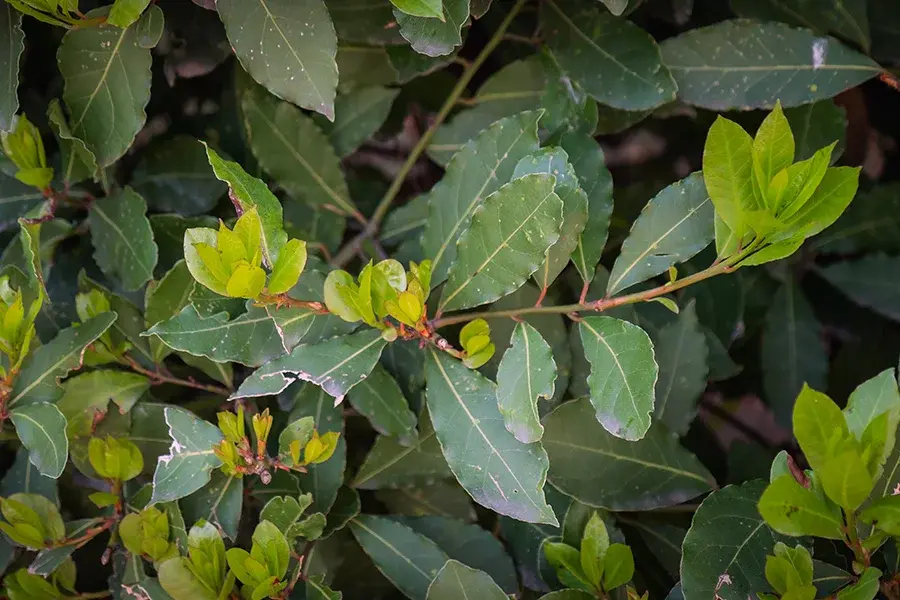Laurus nobilis – Bay Laurel
- Hakan Sener
- Jun 29
- 2 min read
Updated: Jul 13
Explore Laurus nobilis (Bay Laurel) – its characteristics, habitat, cultivation, propagation, and functional uses and benefits.

Laurus nobilis | Botanical Characteristics
Common Names: Bay Laurel, Sweet Bay, True Laurel, Grecian Laurel
Family: Lauraceae
Appearance: A dense, aromatic evergreen shrub or small tree with leathery, glossy dark green leaves. It produces small, pale yellow flowers in spring, followed by small black berries on female plants.
Type: Perennial
Evergreen / Deciduous: Evergreen
Layer: Shrub / Low Tree
Root System: Shallow, spreading root system
Height: 2–10 meters
Width: 2–6 meters
Lifespan: Long-lived perennial, often several decades
Growth Rate: Slow to moderate
Fertility: Not self-fertile (dioecious – male and female flowers on separate plants)
Flowers: Dioecious
Pollinator: Insects, especially bees
Toxicity: Leaves are safe for culinary use; berries and large quantities of essential oil may be toxic
Laurus nobilis | Habitat and Cultivation
Range
Native Range: Mediterranean region
Companionship: Commonly found alongside olive, rosemary, myrtle, and other Mediterranean shrubs
Invasive Range: Not widely reported as invasive
USDA Hardiness Zone: 8–10
Minimum Chill Hours Required: None specified
Resistance/Tolerance
Poor Soil: Moderate tolerance
Drought: High tolerance once established
Shade: Moderate tolerance
Flood: Low tolerance
Wind: Moderate tolerance
Maritime: High tolerance
Air Pollution: Moderate tolerance
Fire: Moderate tolerance
Thriving Conditions
Sun Exposure: Full sun to partial shade
Soil Moisture: Prefers moderately moist but well-drained soils
Soil Type: Sandy, loamy, or clay soils with good drainage
Soil PH: Prefers slightly acidic to neutral (6.0–7.5)
Propagation
Seeds: Can be propagated by seeds, though slow and variable germination
Cuttings: Commonly propagated by semi-hardwood cuttings in late summer
Laurus nobilis | Functional Uses and Benefits
Edible: Leaves are widely used as a culinary herb in soups, stews, and sauces
Medicinal: Traditionally used for digestive issues, anti-inflammatory and antiseptic properties
Cosmetics: Essential oil used in soaps and perfumes
Animal Feed: Not commonly used for animal feed
Fiber: Not used for fiber
Timber: Occasionally used for small woodworking and turning
Firewood: Can be used as aromatic firewood
Wind Break: Suitable for hedging and small windbreaks
Fence: Used ornamentally and functionally in hedges and garden boundaries
Cover Crop: Not used as a cover crop
Mulch: Not typically used as mulch
Nitrogen Fixer: No
Dynamic Accumulator: No significant data available
Pollinator Attractor: Attracts bees and other insects during flowering
Pest Repellent: Aromatic foliage has mild pest-repelling properties
Wildlife Supporter: Flowers provide nectar for pollinators; birds may feed on berries (with caution)
Sign up for our newsletter or connect with us on social media to stay up-to-date with our latest posts and permaculture inspiration.
Explore our inspiring series and posts:
Love the post? Share it with your circle, inspire your people: